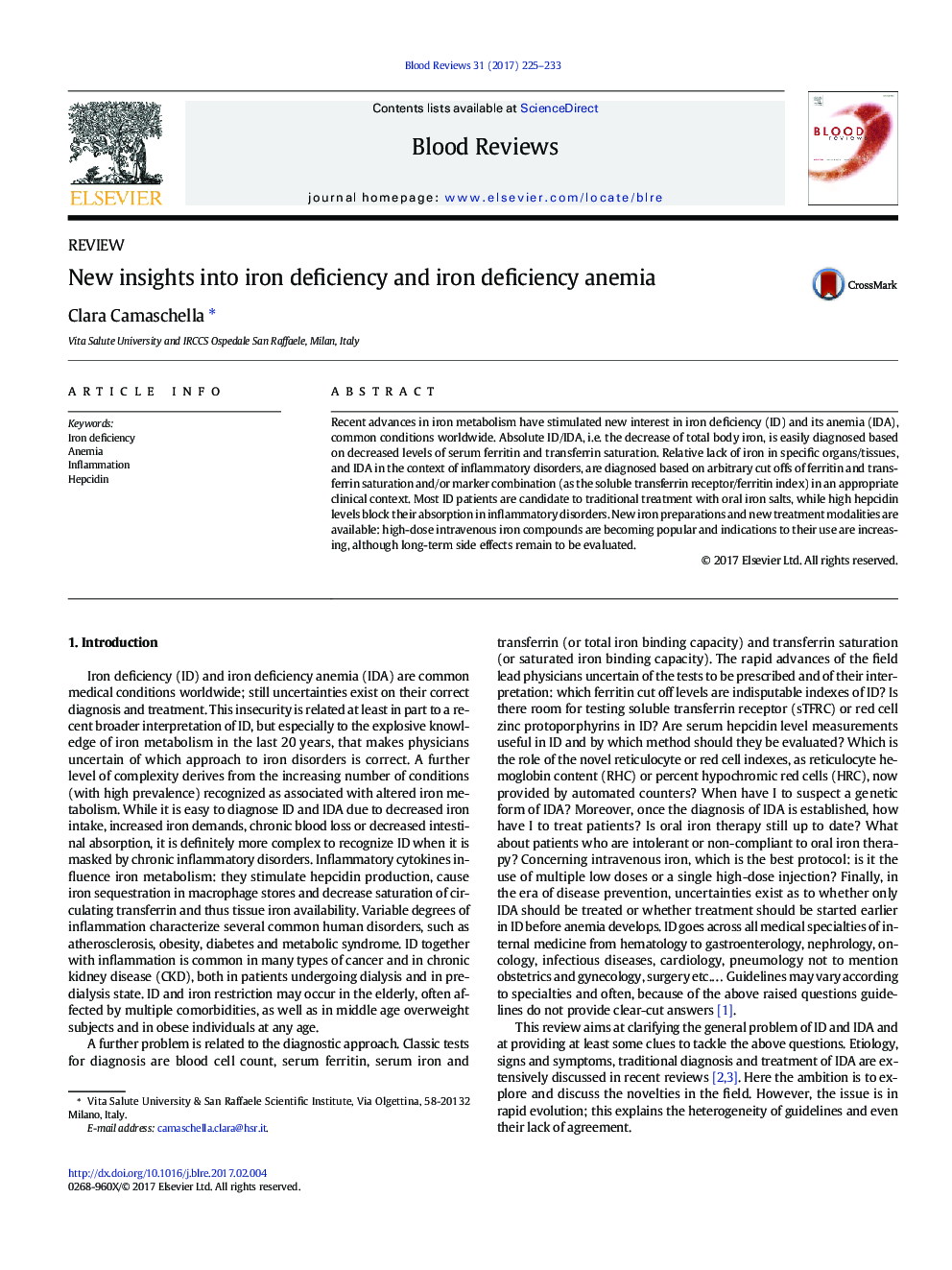| Article ID | Journal | Published Year | Pages | File Type |
|---|---|---|---|---|
| 5524692 | Blood Reviews | 2017 | 9 Pages |
Recent advances in iron metabolism have stimulated new interest in iron deficiency (ID) and its anemia (IDA), common conditions worldwide. Absolute ID/IDA, i.e. the decrease of total body iron, is easily diagnosed based on decreased levels of serum ferritin and transferrin saturation. Relative lack of iron in specific organs/tissues, and IDA in the context of inflammatory disorders, are diagnosed based on arbitrary cut offs of ferritin and transferrin saturation and/or marker combination (as the soluble transferrin receptor/ferritin index) in an appropriate clinical context. Most ID patients are candidate to traditional treatment with oral iron salts, while high hepcidin levels block their absorption in inflammatory disorders. New iron preparations and new treatment modalities are available: high-dose intravenous iron compounds are becoming popular and indications to their use are increasing, although long-term side effects remain to be evaluated.
